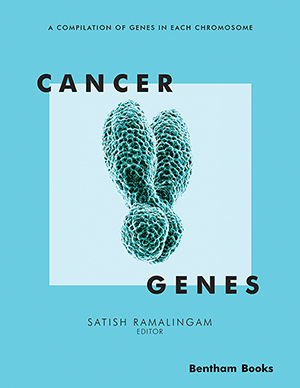Abstract
Background: Gefitinib, an Epidermal Growth Factor Receptor Tyrosine Kinase Inhibitor (EGFR-TKI), frequently causes side effects when used to treat non-small cell lung cancer.
Objective: The purpose of this experiment was to investigate the side effect of gefitinib on the skin and colon of mice.
Methods: Male Balb/c nu-nu nude mice aged 4-5 weeks were used as xenograft tumor models, and gefitinib at 150 mg/kg and 225 mg/kg was started at 9 days after the xenograft tumor grew out. The mice's weights and tumor volumes were tracked concurrently, and the mouse skin adverse reactions and diarrhea were observed during the treatment. The animal tissues were subjected to biochemical and pathological evaluations after 14 days.
Results: Gefitinib effectively decreased the size and weight of transplanted tumors in nude mice, while also lowering body weight and raising indexes of the liver and spleen. Gefitinib could cause skin adverse reactions and diarrhea in mice. Further pathological investigation revealed tight junction- related markers in the mice's skin and colon to be reduced and macrophages and neutrophils to be increased after gefitinib treatment.
Conclusion: The findings imply that gefitinib has negative effects on the skin and colon. Gefitinib- induced skin and colon adverse reactions in mice have been successfully modeled in this study.
Keywords: EGFR-TKI, skin, colon, adverse reactions, gefitinib, tumor.
[http://dx.doi.org/10.1007/s43440-020-00131-0] [PMID: 32666476]
[http://dx.doi.org/10.1002/1878-0261.12155] [PMID: 29124875]
[http://dx.doi.org/10.1146/annurev-pathol-011110-130206]
[http://dx.doi.org/10.1016/j.drudis.2017.10.004] [PMID: 29031620]
[http://dx.doi.org/10.18632/oncotarget.20095] [PMID: 29088904]
[http://dx.doi.org/10.3892/ijo.2021.5270] [PMID: 34558640]
[http://dx.doi.org/10.3390/ijms232315056] [PMID: 36499382]
[http://dx.doi.org/10.2174/0929867329666220729152741] [PMID: 35909291]
[http://dx.doi.org/10.1016/j.jtho.2016.11.2236] [PMID: 28007626]
[http://dx.doi.org/10.1038/nrc1970] [PMID: 16990857]
[http://dx.doi.org/10.1634/theoncologist.2016-0051] [PMID: 27449521]
[http://dx.doi.org/10.1093/toxres/tfab026] [PMID: 34141161]
[http://dx.doi.org/10.1126/scitranslmed.3005886] [PMID: 23966300]
[http://dx.doi.org/10.1196/annals.1397.015]
[http://dx.doi.org/10.1093/toxres/tfab008] [PMID: 33884183]
[http://dx.doi.org/10.1007/s10753-020-01281-2] [PMID: 33025329]
[http://dx.doi.org/10.1038/sj.jid.5701184] [PMID: 18049451]
[http://dx.doi.org/10.3389/fonc.2022.790713]
[http://dx.doi.org/10.1002/ijc.31836] [PMID: 30155890]
[http://dx.doi.org/10.1177/1534735420928493]
[http://dx.doi.org/10.1111/j.1600-0625.2006.00437.x] [PMID: 16761956]
[http://dx.doi.org/10.1111/j.1468-2494.2008.00476.x] [PMID: 19175433]
[http://dx.doi.org/10.1152/physrev.00019.2012] [PMID: 23589827]
[http://dx.doi.org/10.3390/ijms21010124] [PMID: 31878055]
[http://dx.doi.org/10.1002/j.1460-2075.1995.tb00206.x] [PMID: 7489711]
[http://dx.doi.org/10.1080/19490976.2020.1814121] [PMID: 32887530]
[http://dx.doi.org/10.3390/nu12020456] [PMID: 32059355]





























